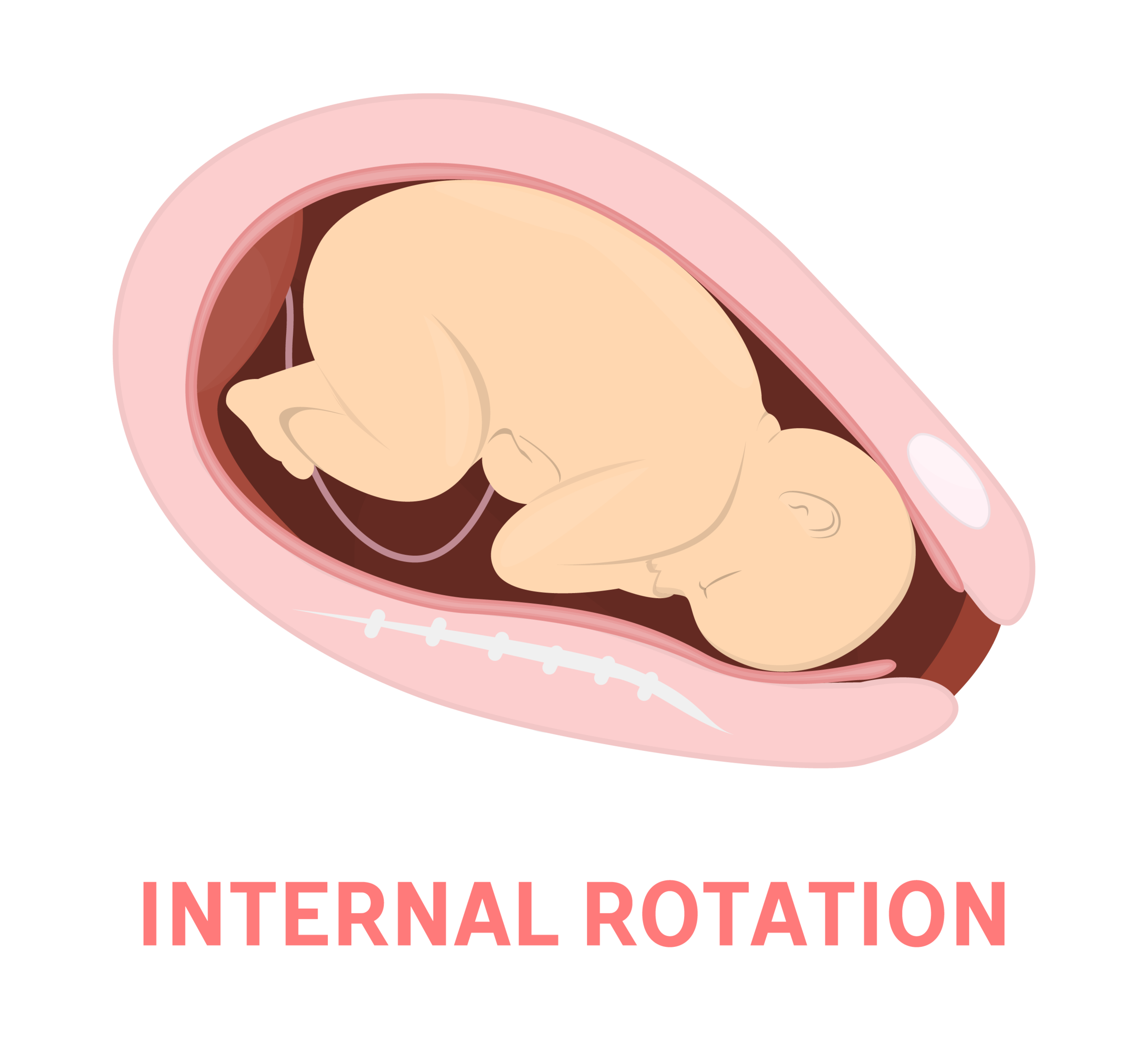Descent and Birth of Your Baby - Be Empowered Birth Series
/Descent and Birth of Your Baby
Be Empowered Birth Series
One of my favorite things about birth is getting to witness something so physically complex happen so instinctively and intuitively. During labor, changes in the baby’s position from the onset of labor until the delivery can feel difficult to distinguish as the sensations of contractions grow stronger and the emotions of birth grow more intense. However, there are amazing mechanics at play between a mother’s body and her baby’s that result in seven distinct cardinal movements of labor. These movements refer to the position of the baby’s head throughout labor.
Even though the technical parts of the birth process may be the last thing on your mind during labor, you can at least take comfort in knowing exactly how something as big as your baby’s head is going to make its way out of you. Your body and your baby have an intrinsic knowledge of each other and innately know how to work together to make birth happen. Here’s what goes on in there while you labor:
Engagement: Your baby is “engaged” when the widest part of their head (measured from ear tip to ear tip across the head) has passed into the pelvic inlet. This is also at or below the ischial crest, and the point your provider is referring to when they describe your baby’s station as “0”.
Descent: Sometimes called “lightening”, descent is the movement of your baby’s head through the bony part of the pelvis and deep into the pelvic cavity. This isn’t one fluid movement, and can actually happen incrementally throughout the first and second stage of labor.
Flexion: This is kind of a step-within-a-step. Flexion occurs during descent as your baby’s head pushes against pelvic tissue, causing their chin to tilt down and touch their chest. This causes the smallest diameter of the baby’s head to present first, which is ideal for passage through the pelvis.
Internal Rotation: Internal rotation is the rotation of your baby’s head from occiput transverse, or the baby’s head facing sideways, to either occiput anterior or posterior, or facing front-to-back or back-to-front. This rotation occurs as a response to baby’s head passing through parts of the pelvis that vary in diameter and shape.
Extension: Your baby’s head is delivered as it passes under the pubic arch and through the vagina!
External Rotation: After the head emerges, there is typically a pause in labor as the baby rotates its head from facing up to facing either to the left or right, toward one thigh. This allows the shoulders to fit down and under the pubic arch.
Expulsion: Once external rotation has occurred, the anterior (forward) shoulder emerges, followed by the posterior (rear) shoulder and the rest of the baby’s body. This movement tends to happen quickly and fluidly once the front shoulder has emerged.
And that’s how your baby moves from your cervix into your arms! It’s a natural process, but a complex one.
Top THREE tips to ensure your body and baby work together for a smooth labor and delivery
–See a chiropractor. Regular care by a Webster-certified chiropractor during pregnancy can help make sure your body is optimally prepared for birth. Chiropractors who specialize in prenatal care often also attend births and are an amazing resource to have during a difficult labor.
–Hire a doula. Having the support of a skilled doula to help support you during labor can make you more comfortable, and a doula can help with positions to get things back on course if the process isn’t happening smoothly, if progress slows, or if you experience variations in labor that make birth extra long or difficult.
–Don’t push lying on your back. This whole process is a lot easier when gravity is working in your favor. Explore more physiologically natural positions for delivery, and talk to your provider ahead of time to make sure they support you pushing how you feel most comfortable.
The seven cardinal movements of labor may not be at the top of your mind as you deliver, but knowing what’s going to happen in your body can help you better prepare for birth. Good luck–and remember to sign up for our Be Empowered Childbirth Classes to learn comfort measures and positions that help support the seven cardinal movements!









